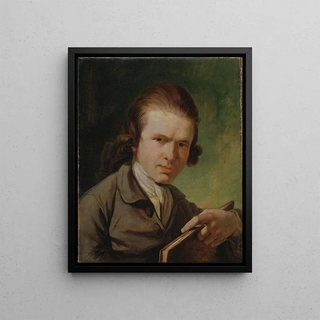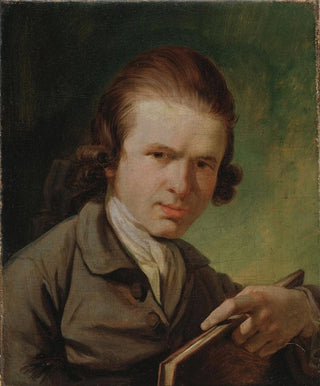Art print | The Tinsmith J. F. Clemens - Jens Juel


View from behind

Frame (optional)
Le chaudronnier J. F. Clemens - Jens Juel – Captivating introduction
In the vast panorama of art history, certain works stand out for their ability to capture the essence of an era while telling timeless stories. "Le chaudronnier J. F. Clemens" by Jens Juel is a perfect example. This canvas, which immerses us in the artisanal world of the 18th century, invites us to explore not only the craft of the boilermaker but also the subtleties of daily life at that time. Through this art print, the viewer is transported to a world where manual work and art meet, revealing the beauty of simple gestures and everyday objects.
Style and uniqueness of the work
Jens Juel's work is characterized by striking realism and meticulous attention to detail. In "Le chaudronnier J. F. Clemens," every element, from the artisan's focused face to the texture of the metal he shapes, is treated with exemplary care. Light plays a crucial role in this composition, highlighting forms and shadows, thus creating a warm and intimate atmosphere. Juel, as a portraitist, manages to transcend the simple portrait to offer a true study of character. The boilermaker's gaze, filled with determination and passion, reflects his dedication to his craft. This painting is not just a depiction of a profession but a celebration of humanity, its efforts, and skills.
The artist and his influence
Jens Juel, an emblematic figure of 18th-century Danish painting, knew how to mark his era with his unique style and his ability to capture daily life with rare emotional depth. Trained at the Royal Danish Academy of Fine Arts in Copenhagen, Juel combined tradition and innovation, drawing inspiration from great masters while developing a personal approach. His influence is felt not only in his portraits but also in his way of representing genre scenes, where he succeeds in integrating narrative elements that enrich his works. By highlighting ordinary characters, he contributed to redefining the role of the artist in society, emphasizing the importance of daily life and the

Matte finish

View from behind

Frame (optional)
Le chaudronnier J. F. Clemens - Jens Juel – Captivating introduction
In the vast panorama of art history, certain works stand out for their ability to capture the essence of an era while telling timeless stories. "Le chaudronnier J. F. Clemens" by Jens Juel is a perfect example. This canvas, which immerses us in the artisanal world of the 18th century, invites us to explore not only the craft of the boilermaker but also the subtleties of daily life at that time. Through this art print, the viewer is transported to a world where manual work and art meet, revealing the beauty of simple gestures and everyday objects.
Style and uniqueness of the work
Jens Juel's work is characterized by striking realism and meticulous attention to detail. In "Le chaudronnier J. F. Clemens," every element, from the artisan's focused face to the texture of the metal he shapes, is treated with exemplary care. Light plays a crucial role in this composition, highlighting forms and shadows, thus creating a warm and intimate atmosphere. Juel, as a portraitist, manages to transcend the simple portrait to offer a true study of character. The boilermaker's gaze, filled with determination and passion, reflects his dedication to his craft. This painting is not just a depiction of a profession but a celebration of humanity, its efforts, and skills.
The artist and his influence
Jens Juel, an emblematic figure of 18th-century Danish painting, knew how to mark his era with his unique style and his ability to capture daily life with rare emotional depth. Trained at the Royal Danish Academy of Fine Arts in Copenhagen, Juel combined tradition and innovation, drawing inspiration from great masters while developing a personal approach. His influence is felt not only in his portraits but also in his way of representing genre scenes, where he succeeds in integrating narrative elements that enrich his works. By highlighting ordinary characters, he contributed to redefining the role of the artist in society, emphasizing the importance of daily life and the






